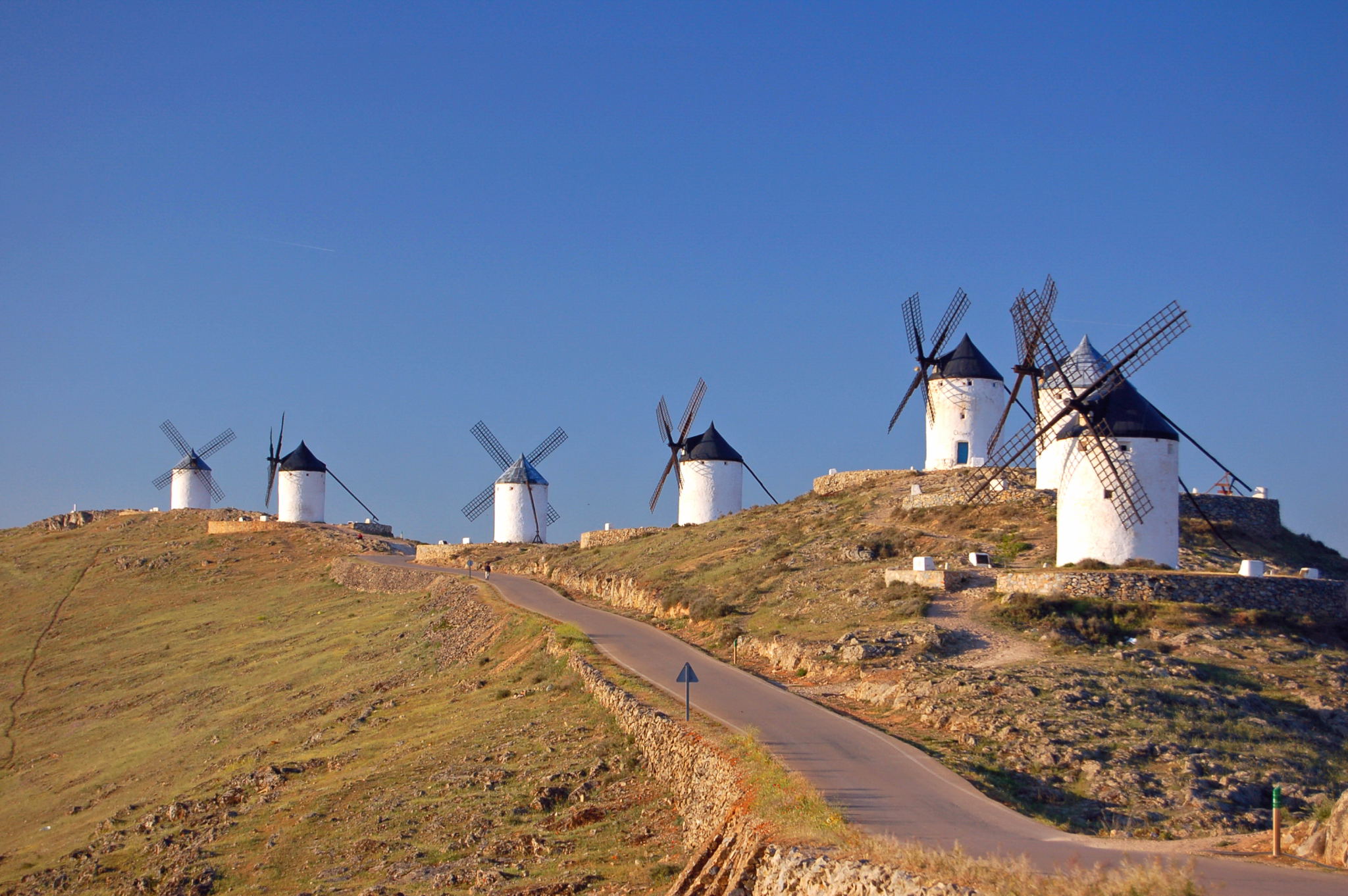 Following the towns and castles of the Order of Calatrava, facades painted in white and indigo, vast expanses of vineyards and cereal crops, landscapes of endless red soil plains and constant references to Don Quixote are everywhere one looks. This is La Mancha and home to one of the most delicious aubergines you will ever try, however, this land has far more to offer than just a unique vegetable and to discover it, it is best to start in Daimiel, with a visit to the Las Tablas National Park.
Following the towns and castles of the Order of Calatrava, facades painted in white and indigo, vast expanses of vineyards and cereal crops, landscapes of endless red soil plains and constant references to Don Quixote are everywhere one looks. This is La Mancha and home to one of the most delicious aubergines you will ever try, however, this land has far more to offer than just a unique vegetable and to discover it, it is best to start in Daimiel, with a visit to the Las Tablas National Park.
What once used to be the hunting grounds of King Alfonso XII and his son Alfonso XIII is today a forest of rushes, cattails, sedge and reeds that is home to ducks, herons and frogs. A total of 250 bird species inhabit these wetlands, which spread over 2,000 hectares, located between the municipal districts of Daimiel and Villarrubia de Los Ojos. One must come well prepared: canteen, during the hottest months, and binoculars, at any time of year. They are fundamental for the close observation of every species of wildlife. To move on to the next destination we should take the CM-4107 road, which will take us all the way to Almagro, a road which is lined with typical farmhouses whitewashed up to their roofs and windmills that are much more modern than those which Don Quixote fought.
Almagro is a place that breaks from its surroundings. The town has been declared a Historical and Artistic Site and is therefore well worth visiting, in addition to conserving the same Manchegan essence as its neighbouring towns. It was the headquarters for the Order of Calatrava, an the first Cavalry Military Order founded in 1158 by the Catholic Church.
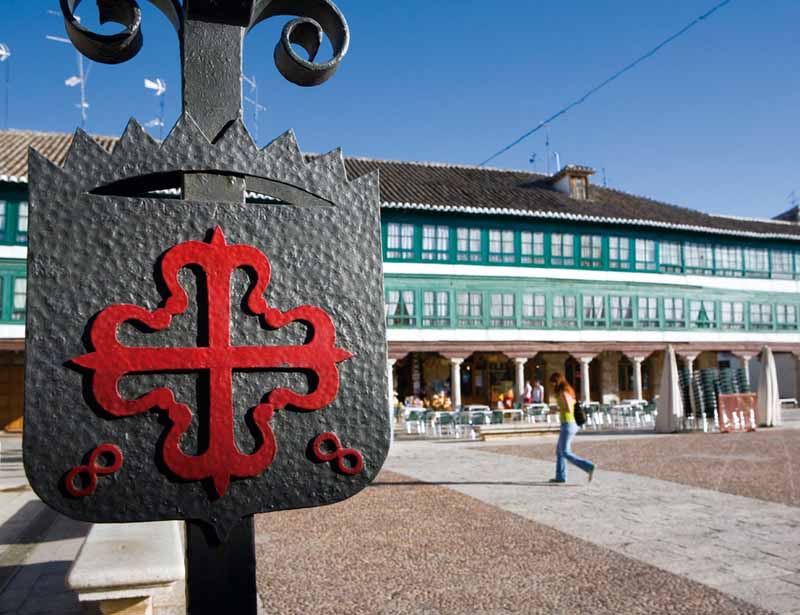

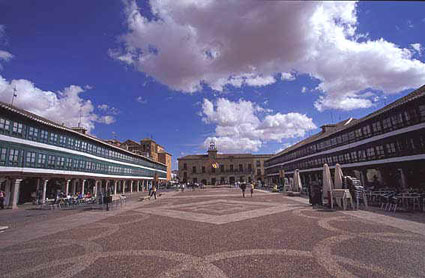 The Plaza Mayor (Main Square), a really beautiful site flanked by porticoes with Tuscan columns, is the starting point from which to discover this town. Replete with terraces where one can eat a snack, it is the ideal place in which to try some local aubergines, Pisto (ratatouille) or Migas (fried breadcrumbs). The 16th century Town Hall can also be found in the square, in addition to its most prized treasure, the Corral de Comedias (open-air comedy theatre). A group of actors act as guides on a dramatised tour during which a voice-over narrates the story of the building. It was built in 1628 as a comedy inn-house and declared a National Monument in 1955.
The Plaza Mayor (Main Square), a really beautiful site flanked by porticoes with Tuscan columns, is the starting point from which to discover this town. Replete with terraces where one can eat a snack, it is the ideal place in which to try some local aubergines, Pisto (ratatouille) or Migas (fried breadcrumbs). The 16th century Town Hall can also be found in the square, in addition to its most prized treasure, the Corral de Comedias (open-air comedy theatre). A group of actors act as guides on a dramatised tour during which a voice-over narrates the story of the building. It was built in 1628 as a comedy inn-house and declared a National Monument in 1955.
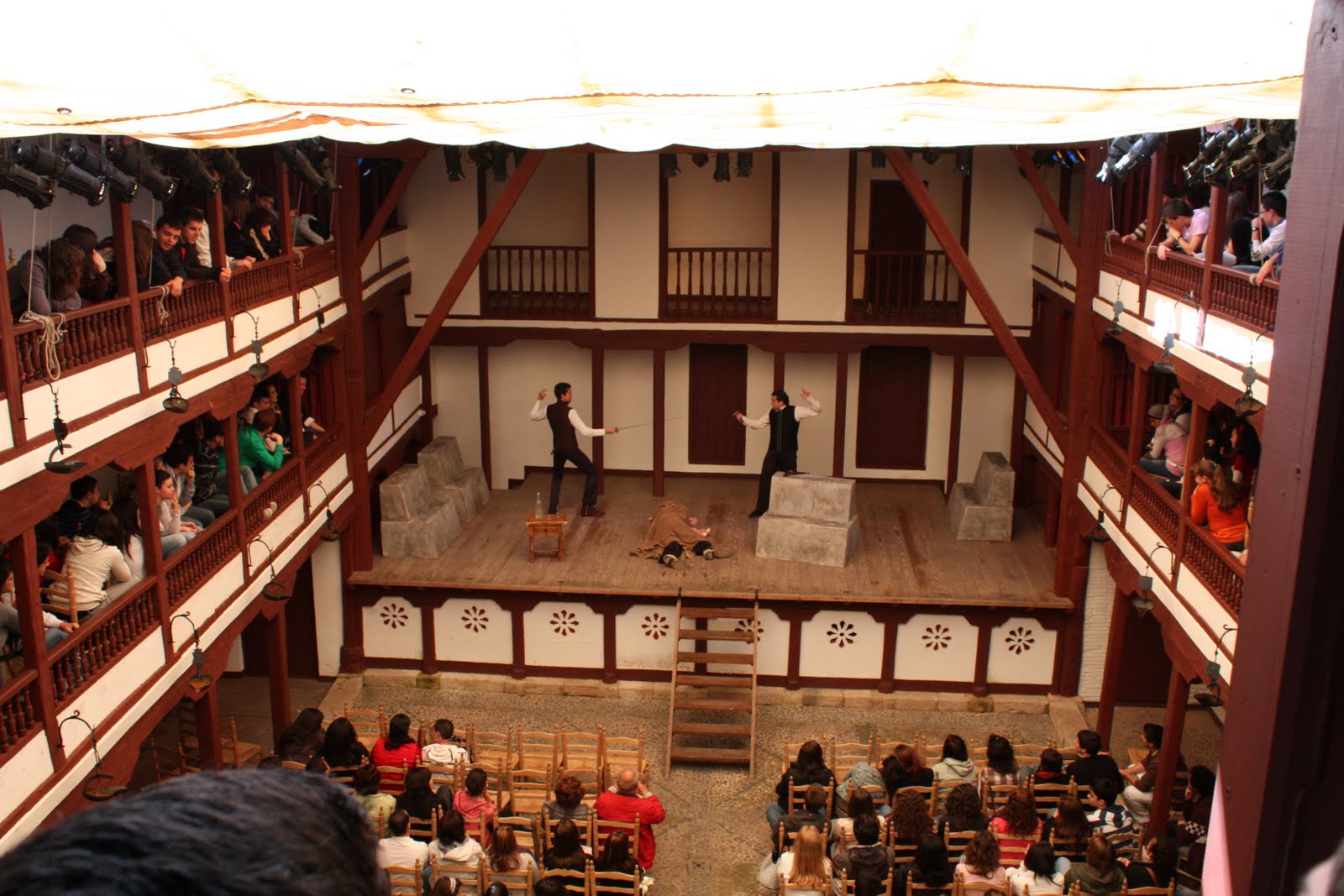
The Fúcares Warehouse is located very near the square, built in the 16th century by this wealthy German merchant family to store the grain stemming from the Maestrazgo's earnings and mercury from the Almadén mines. But Almagro's real distinguishing feature is its bobbin lace industry, a skill that requires extensive mastery and was introduced by the Fúcares Family in the 1600s and has continued ever since passing down the generations from mother to daughter. The Lace Museum exhibits one of the best textile collections in the world. The Madre de Dios Church, built in the 17th century in the Gothic style with Renaissance details, or Asunción de Calatrava Convent, built in 1519, are also well worth seeing.
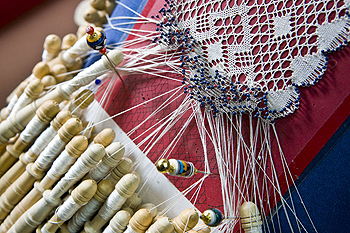 However Almagro is most well known outside of its borders for a very simple local speciality, it’s aubergines. The cooking, fermentation and dressing process give these vegetables a unique flavour. They are collected before they are very ripe, so they are stored while still small and before they have taken on their characteristic purple colour. They are prepared, cooked, dressed with oil, vinegar, water, salt, paprika, cumin, a bay leaf, freshly ground pepper and garlic, and left to marinate until they are ready to eat and served cold. They may also be split in half and then stuffed with pepper paste and skewered with fennel sticks.
However Almagro is most well known outside of its borders for a very simple local speciality, it’s aubergines. The cooking, fermentation and dressing process give these vegetables a unique flavour. They are collected before they are very ripe, so they are stored while still small and before they have taken on their characteristic purple colour. They are prepared, cooked, dressed with oil, vinegar, water, salt, paprika, cumin, a bay leaf, freshly ground pepper and garlic, and left to marinate until they are ready to eat and served cold. They may also be split in half and then stuffed with pepper paste and skewered with fennel sticks.
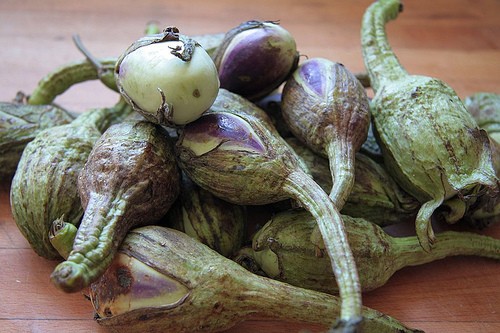
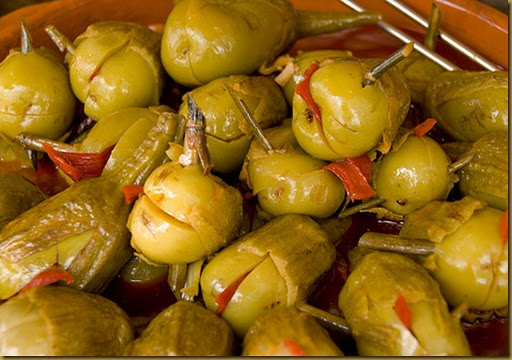
The delicious dressed Aubergine from Almagro, of the Solarum melongena variety, was originally part of the Arabic cuisine, which introduced this practice to the area, where it has been maintained ever since.
This characteristic dressing used for the aubergines was at first an excellent way of preserving seasonal food in a location that is not known for its vegetables. The gastronomical peculiarity of the aubergines from Almagro has crossed Spain’s borders, so some of them are reserved for export. It is a product that is directly identified with La Mancha and the sign of the Denomination of Origin guarantees their quality. They are a fantastic snack to accompany an ice-cold beer especially this time of year, even though we are being drenched at the moment with torrential rain!